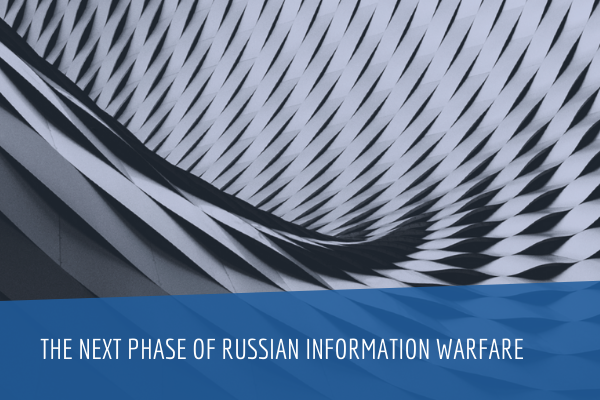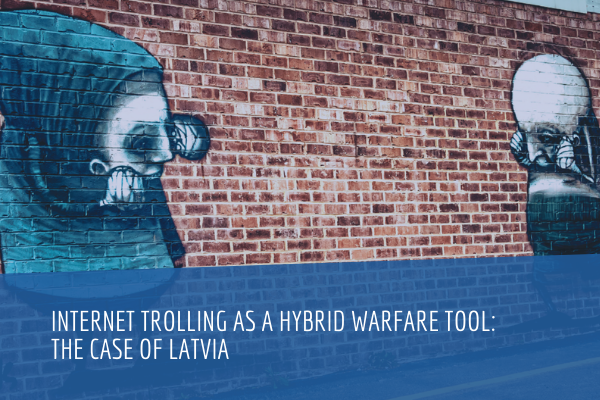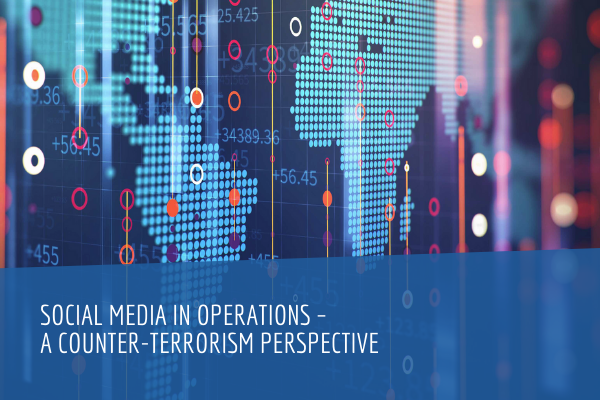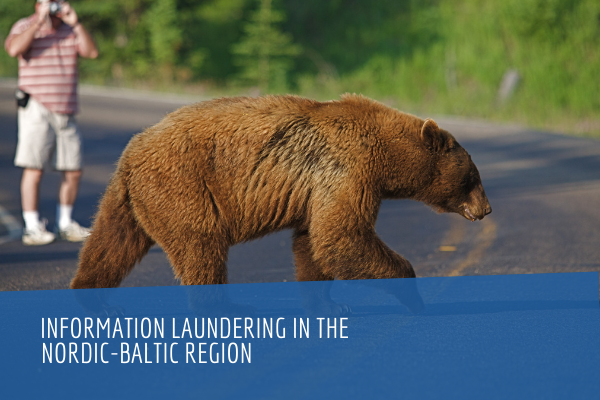About this report
The terrorist organization, Daesh, also known as so-called Islamic State/IS/ISIS/ISIL, has launched an extremely sophisticated information campaign at various target audiences in order to gain support for its expansion in the Middle East. Daesh’s first strategic achievement, drawing considerable attention from various governments and mainstream Muslim groups, was the first public speech given by self-proclaimed Caliph, Abu Bakr al-Baghdadi. It was devoted entirely to the proclamation of the so-called Caliphate.
In order to find out how this campaign is managed, and to propose practical solutions to existing challenges concerning situation on the Middle East, the NATO Strategic Communications Centre of Excellence (NATO StratCom COE) conducted research into Daesh’s information strategy.
The methodology for analysing Daesh’s information strategy included a number of techniques such as social psychology, the psychology of communication, and social media analysis. The work was done in consultation with social media experts and advisors from NATO member states in order to achieve the best result.
This executive summary summarizes three reports - “Type of applied persuasive strategy and its influence on message effectiveness” (Ph. D. T. Grzyb), „Visual framing in the Islamic State” (Ph. D. Shahira Fahmy) and “Network of Terror: How Daesh Uses Adaptive Social Networks to Spread its Message” (Mr. Joseph Shaheen).
Research into Daesh’s communication strategy shows that the spectrum of the problem is much greater than recruitment and radicalization.
ROOTS
Fifteen years of insurgency, including the experience of the former soldiers of Saddam Hussein’s regime and foreign fighters from all over the world, have given the group a deep understanding of how to effectively shape the information environment.
The proclamation of the ‘so-called Caliphate’ and the release of a publication entitled “This is the promise of
Allah” by the Alhayat Media Centre, provide information about the future plans of the organisation and can serve as guidelines for Strategic Communication.
After Abu Bakr al-Baghdadi’s speech, many organizations pledged allegiance or offered their support to Daesh. This support is instrumental, not only for conducting terrorist attacks, but also for amplifing the Daesh Information Strategy globally.
STRUCTURE
Daesh is divided into specialised councils and departments at the global and regional levels. A specific group within the structure is responsible for shaping the information environment by disseminating different kinds of messages. However, each member of the group plays an important role and is a part of the communication strategy.
INFORMATION STRATEGY
The name of the organization represents the core message of the group. The group wants to be described by westerners as ‘The Islamic State’, and by Middle Eastern audiences as ‘ad-Dawlah al-Islamiyah’, ‘ad- Dawlah al-Caliphate’ or ‘the Caliphate’.
The main efforts of the information strategy can be divided into four types of messages: Unite, Frighten, Support, and Inform.
The most effective type of messaging is spreading information about success of the group. The group seems to be aware of this, since informative messaging has increased significantly since the beginning of the information campaign.
Various tools, including social media advertisement (propaganda), physical actions, and computer network operations are used to access or target potential audiences.
USE OF SOCIAL MEDIA
Twitter is used as an umbrella media platform that connects various media sources into one easily browsable and searchable information index.
Daesh, perhaps unknowingly, uses the adaptive network structure of Twitter to combat outside influences and react to external operations that seek to curb their operations. Internet networks, especially Twitter, adapt at high speeds and with limited central organization.
Daesh makes innovative use of platform vulnerabilities that allows them to evade detection, suspension, and deletion by state and non-state actors using both automated and manual methods of detection.
Daesh has amassed a strong following supported by a dedicated internal human infrastructure that allows them to affect a substantial impact on the information environment.
Through the use of a core-periphery network structure and a high number of network-central actors, Daesh has created a redundancy factor that can withstand repeated efforts to disrupt their information supply chain.
Through the use of account inflation, signalling, and closure methods, Daesh has been able to successfully create friend/follow networks that feed into their ability to build sustainable adaptive networks, evade detection, and maintain their online activity.
Daesh has built a network structure that utilizes the flexibility of small communal networks and allows for large-scale interactions commonly associated with large diverse-use networks. This adds to the challenge of combating them in the traditional information warfare environment.
Daesh uses the Twitter community structure as a defensive structure against account deletion and suspension. The structure is able to recover quickly by organizing in a number of small communities and some larger ones.
CONCLUSIONS
- The effectiveness has its roots in this what was done at the beginning. Proclamation of the Caliphate, speech of Abu Bakr al-Baghdadi, and strategic guidance for future plans made the group strong enough to draw attention of different countries, media and terrorist organizations.
- Various audiences perceive the name of the organization differently. Since ‘perception is reality’, the choice of name used for communication purposes is crucial.
- Religion underpins Middle Eastern societies. Daesh uses the radical interpretation of religion for its most effective communication.
- Recruitment campaign, done internally and externally by group members has incredible meaning in overall Daesh campaign and at the same time it is the main concern of many countries around the globe.
- Actions speak louder than words. Daesh knows that it is more important to take action than to merely declare intentions. In other words, Daesh is aware of the importance of avoiding ‘say-do gaps’.
- Daesh is well versed in persuasion techniques that manipulate not only its adversaries, but also its own members and supporters. By paying close attention to the basic principles of influence we can identify the ways in which the group implements its strategy and the reasons its communication strategies are so effective.
RECOMMENDATIONS
- It is necessary for all countries to understand Daesh’s strategic goals and how they formulate their messages. The key to success in countering Daesh at every level, and building resistance to Daesh messages through the education of home audiences, is understanding how the structure works and who the potential target audiences are.
-
Language and terminology matter. Therefore, the words used to spread information and counter messaging should be carefully chosen.
-
From the psychological point of view, intimidation or ridicule will not be effective counter narrative strategies. Illustrating how Daesh propaganda actually works to reach its audiences and pointing out its manipulative nature will undermine the credibility of Daesh and provide a much more productive strategy.
-
Testimonials from disaffected and critical foreign fighters (defectors) or supporters, both male and female, can be used to reveal the true face of the terrorist group. The strategy will be much more effective if the messages come from the Middle East instead of from Western countries—‘don’t come here’ is a much stronger message than ‘don’t go there’.
-
When communicating to the outside world, emphasis should be placed on the effectiveness of a global coalition, as well as on every loss and defeat suffered by Daesh.
-
It is necessary to understand the principles of influence, which draw out specific behaviours, so that countries can protect their own societies from Daesh communication strategies, including recruitment and the process of radicalization. Each country, society, and audience needs to have its own specialised and comprehensive approach based on local demographics and psychographics.
-
Since every country has its own intelligence system, which focuses on those aspects of the situation that are closest to that country, wider information sharing about Daesh actions, techniques, and strategies will benefit everyone. Security institutions of various countries should cooperate in order to share resources.






